Hair Color Safety Guide
Find Your Safe Hair Color
Answer these quick questions to get personalized recommendations for safely coloring grey hair without causing hair loss.
Recommended Color Type
Why this is the best choice for you
Want to cover those silver strands but worried about shedding more hair? You don’t have to choose between color and health. Below are proven steps, product picks, and after‑care tricks that let you color grey hair without hair loss while keeping your scalp happy.
Quick Takeaways
- Pick ammonia‑free or semi‑permanent dyes to minimize scalp irritation.
- Pre‑condition with a protein‑rich mask 24‑48hours before coloring.
- Do a patch test and a strand test to gauge reaction and color lift.
- Apply dye on dry, clean hair using a brush, not a bowl, to avoid excess moisture on the scalp.
- Follow up with a sulfate‑free shampoo and a deep‑conditioning routine for at least two weeks.
Understanding What Grey Hair Means for Your Scalp
Grey hair appears when melanocytes stop producing pigment. The hair shaft itself becomes more porous, which can make it absorb chemicals faster. At the same time, the scalp may get a bit drier with age, raising the risk of irritation when harsh dyes are used.
Why Some Dyes Trigger Hair Loss
Traditional permanent dyes contain ammonia and high levels of peroxide. These ingredients open the hair cuticle aggressively, allowing the color to penetrate but also stripping natural oils. If the scalp barrier is compromised, the irritation can lead to inflammation, and chronic inflammation is a known factor for telogen‑effluvium (temporary shedding).
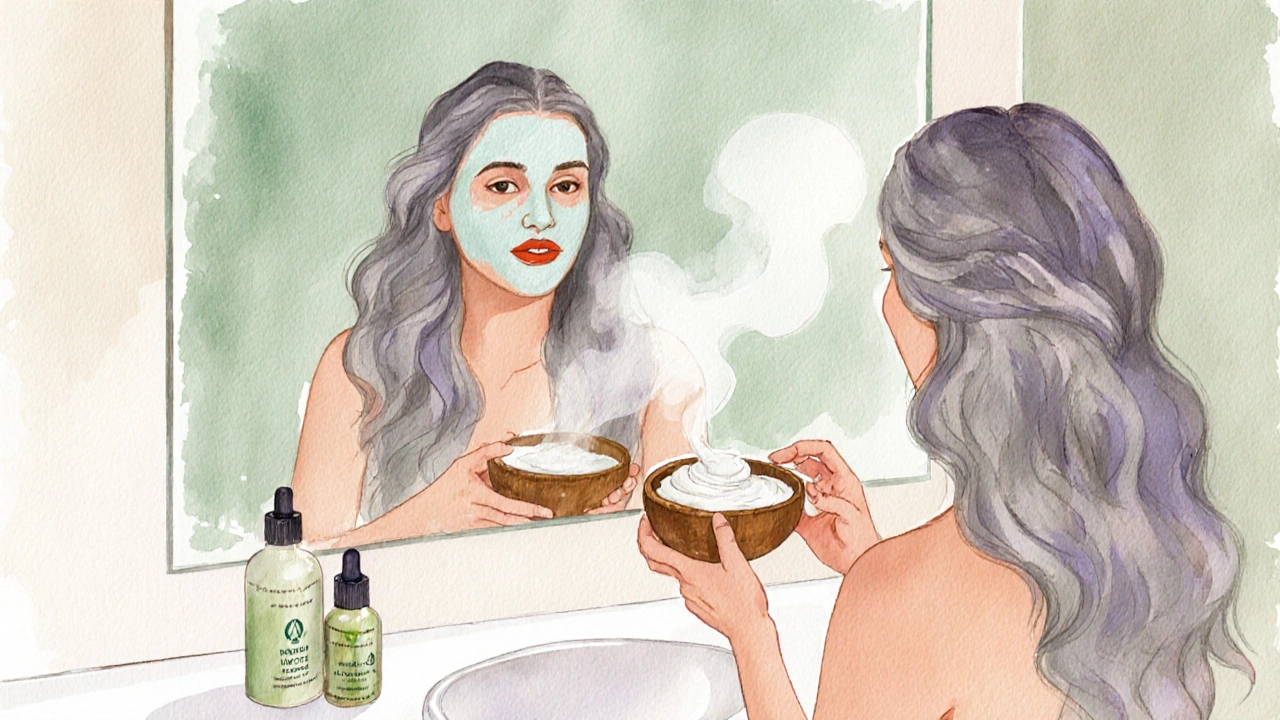
Choosing Low‑Damage Color Options
Hair dye is a product that adds pigments to the hair shaft. Not all hair dyes are created equal. Below is a quick rundown of the safest choices for gray coverage.
| Type | Damage Risk | Longevity | Color Coverage | Best For |
|---|---|---|---|---|
| Permanent hair color | Medium - uses peroxide | 6‑8 weeks | Full gray coverage | Those who want long‑lasting color and are comfortable with salon visits |
| Semi‑permanent hair color | Low - no peroxide | 3‑6 weeks | Partial to full coverage (depends on hair porosity) | First‑timers and people with sensitive scalps |
| Ammonia‑free dye | Very low - gentle pH | 4‑8 weeks | Full coverage | Anyone prone to scalp irritation |
| Henna | Low - natural plant pigment | 4‑6 weeks | Partial (adds warm tones) | Natural‑look seekers comfortable with orange/red undertones |
Preparing Your Hair and Scalp
Preparation is the secret sauce. Follow these steps 24‑48hours before you dye:
- Wash with a mild, sulfate‑free shampoo to remove buildup without stripping natural oils.
- Apply a protein‑rich conditioner (look for keratin or silk amino acids) and leave it on for 5minutes. Rinse lightly; you want some residue to protect the cuticle.
- Massage a scalp‑soothing serum containing aloe vera or panthenol. This creates a barrier against potential irritation.
- Do a patch test on the inner forearm: wait 48hours for any redness.
- Do a strand test on a hidden hair section to see how the gray lifts and to gauge the final shade.
Application Technique That Saves Your Roots
Even the gentlest dye can cause trouble if applied incorrectly. Here’s a scalp‑friendly method:
- Mix the dye exactly as the manufacturer instructs-no extra peroxide.
- Separate hair into small sections using clips. This keeps the scalp exposed and lets you control where the dye goes.
- Using a tint brush, apply the mixture to the gray strands first, starting a few centimeters away from the scalp. Slowly work toward the roots.
- When you’re close to the scalp, use a lighter hand and avoid rubbing. Let the color sit for the recommended time (usually 25‑35minutes).
- Rinse with lukewarm water until the water runs clear. Follow with a post‑color conditioner that’s designed for color‑treated hair.
After‑Care Routine to Keep Hair Strong
What you do after rinsing matters as much as the dye itself.
- Scalp health can be boosted with a weekly tea‑tree oil scalp mask (1drop per tablespoon of carrier oil).
- Use a sulfate‑free, color‑protecting shampoo no more than twice a week. Over‑washing strips moisture.
- Deep‑condition once a week with a mask containing argan oil or shea butter. Leave it on for at least 10minutes.
- Limit heat styling for the first two weeks. If you must use a blow dryer, attach a diffuser and keep the temperature below 140°F.
- Take a biotin or collagen supplement if your diet lacks protein, as healthy hair grows from within.
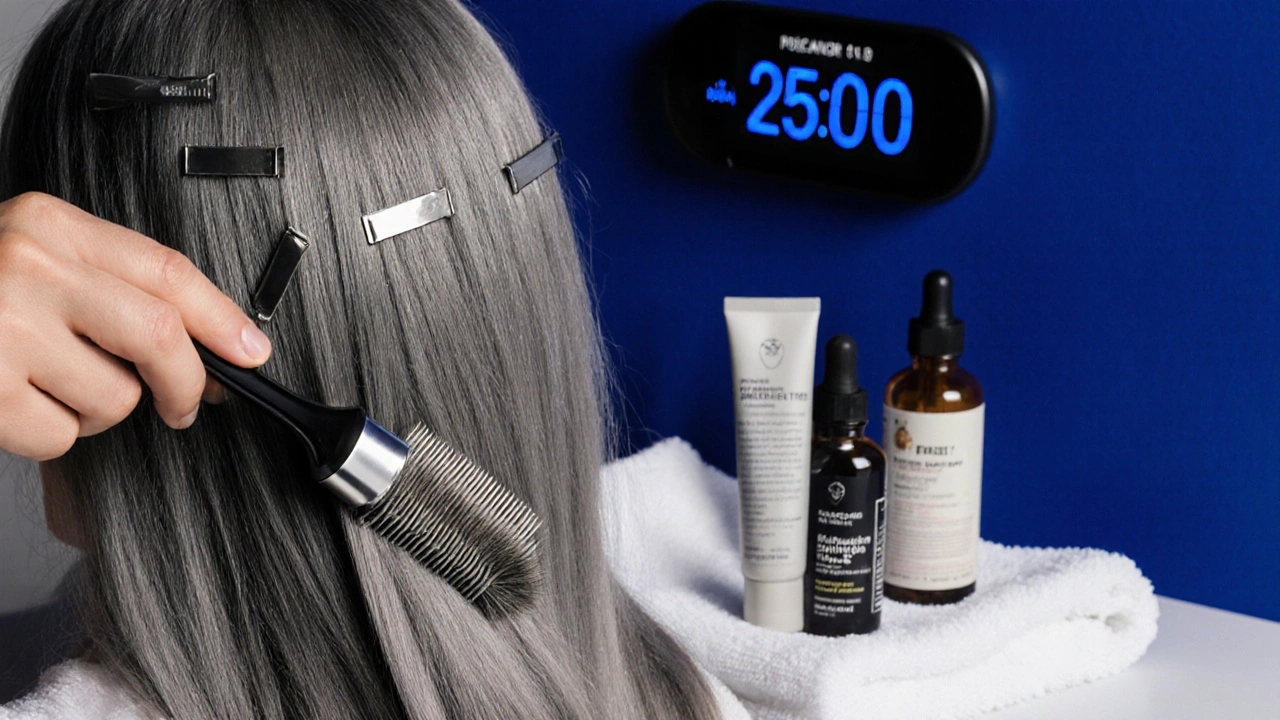
When to Walk Into a Salon
DIY works for most, but there are red flags that signal a professional touch:
- Extensive thinning or patchy loss already present.
- History of allergic reactions to cosmetics.
- Desire for dramatic color change (e.g., from black to platinum) that requires multiple bleaching steps.
Salon professionals can perform a scalp analysis, use low‑pH balancers, and apply techniques like balayage that reduce the amount of product touching the roots.
Common Mistakes and How to Avoid Them
- Skipping the strand test-you might end up with a color that's too dark or too bright.
- Applying dye on wet hair-excess water dilutes the formula and can cause uneven lift.
- Leaving the dye on for longer than advised-this raises oxidation, increasing damage risk.
- Using harsh clarifying shampoos right after coloring-this strips the new pigment.
- Neglecting after‑care-without proper moisture, the hair shaft becomes brittle and falls out.
Putting It All Together: A 3‑Week Plan
Here’s a simple calendar to follow:
- Day 1: Patch test + strand test.
- Day 2‑3: Protein conditioner and scalp serum.
- Day 4: Perform the dyeing process using a semi‑permanent or ammonia‑free product.
- Day 5‑7: Light, sulfate‑free washing; deep‑condition on Day 7.
- Week 2: Maintain with gentle shampoo, twice‑weekly conditioning, and weekly scalp mask.
- Week 3: Assess hair health. If you notice any excess shedding, pause coloring and focus on nourishment for another week.
Frequently Asked Questions
Can I use regular permanent hair color on grey hair without hurting my scalp?
Regular permanent color works, but it contains ammonia and higher peroxide levels, which can irritate a sensitive scalp. If you have any redness or dryness, switch to an ammonia‑free or semi‑permanent formula.
How often can I safely re‑color my grey hair?
Give your hair at least six weeks between permanent dyes. Semi‑permanent or ammonia‑free shades can be refreshed every three to four weeks, but always follow with deep conditioning.
Is henna a good alternative for covering gray?
Henna adds warm, reddish tones and is low‑damage, but it won’t give you a true black or cool brown. It’s best for those who like a natural, slightly orange‑brown look.
What should I do if I feel itching after dyeing?
Rinse the scalp with cool water, apply a soothing aloe‑gel or a diluted chamomile rinse, and avoid heat styling for the next 48hours. If itching persists, consult a dermatologist.
Do I need a special shampoo for colored gray hair?
A sulfate‑free, color‑protecting shampoo helps retain pigment and keeps the scalp from drying out. Look for formulas with glycerin or panthenol.

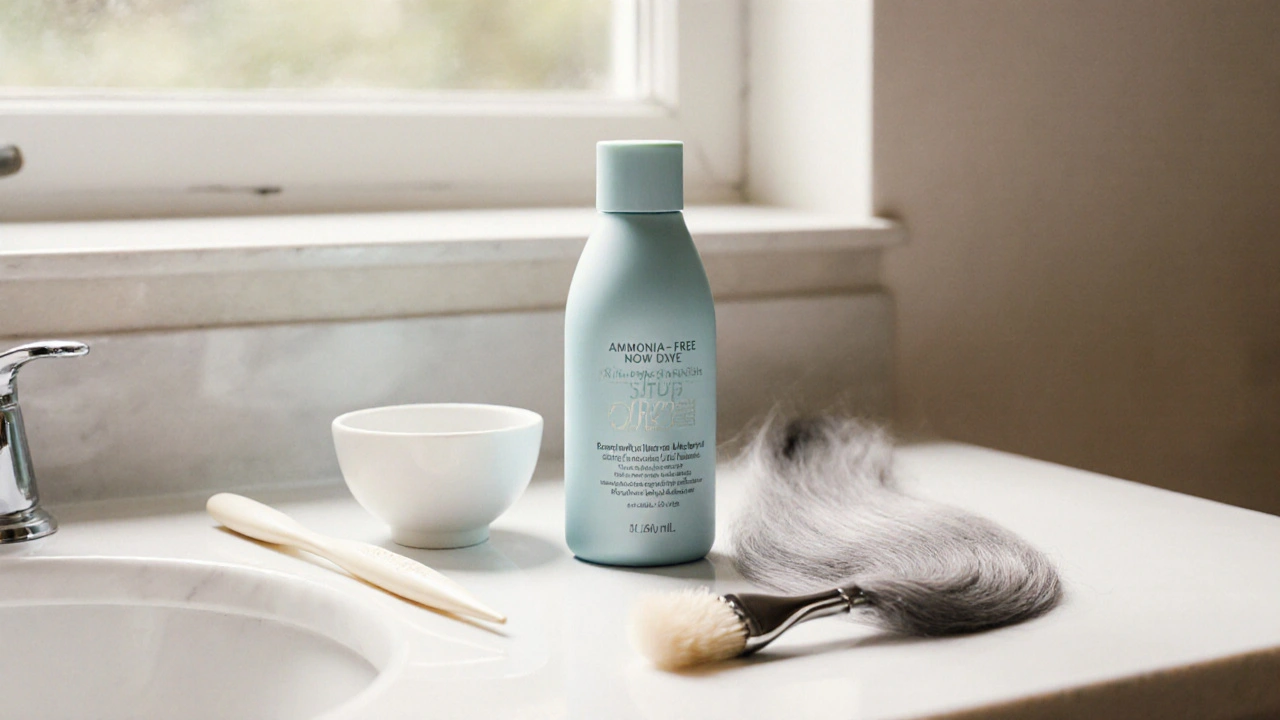
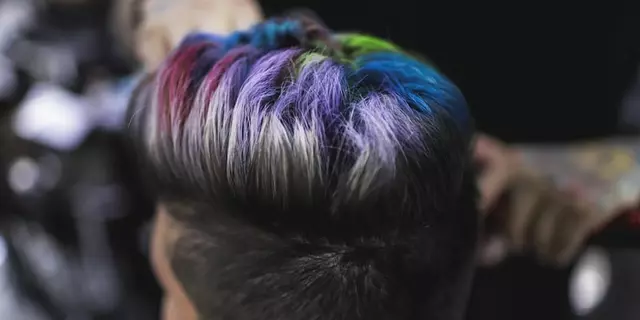

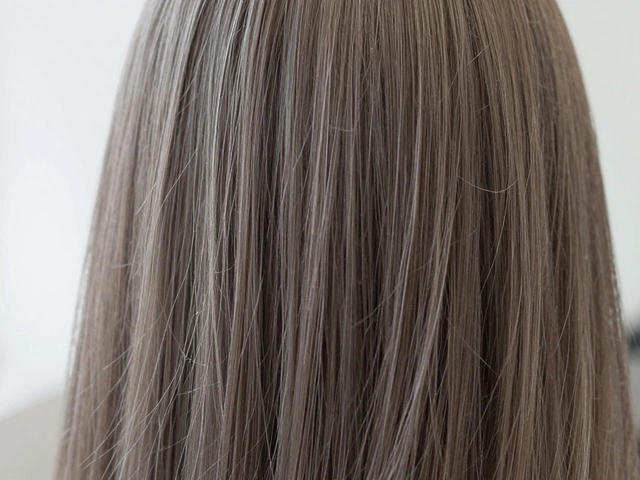
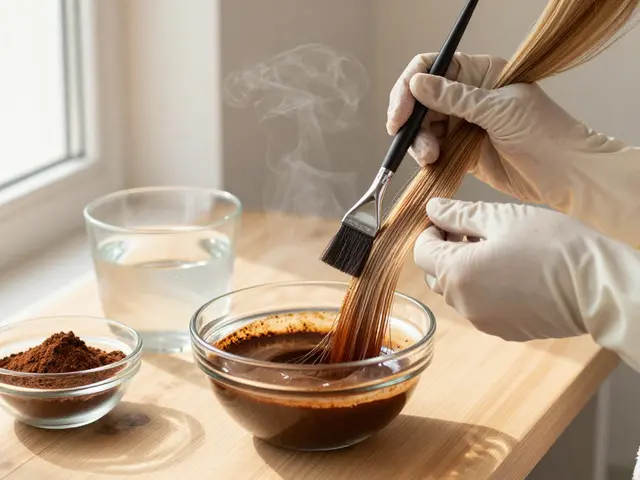
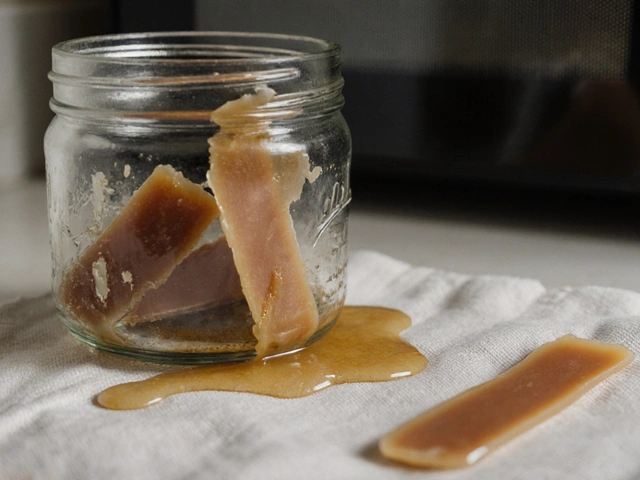
Ronnie Kaye
October 8, 2025 AT 14:53Oh sure, because a little ammonia‑free dye is totally going to stop my hair from falling out while I binge‑watch Netflix.
Priyank Panchal
October 17, 2025 AT 21:06Listen up, if you think tossing any cheap box dye on gray hair won’t mess up your scalp, you’re dead wrong. The chemicals in regular dyes rip open the cuticle, and that’s a fast‑track to inflammation‑induced shedding. Use a protein‑rich mask days before, and never, ever apply the color on wet hair – the water dilutes the formula and makes it harsher. Test a strand first, otherwise you’ll be stuck with a brass tangle and a flaky scalp. Follow the post‑color routine religiously or say goodbye to those precious strands.
Ian Maggs
October 27, 2025 AT 02:20When contemplating the chromatic transformation of argent strands, one must first acknowledge the inherent porosity of aged keratin; this porosity, while advantageous for pigment uptake, simultaneously predisposes the follicle to heightened chemical ingress, a fact oft‑overlooked in perfunctory DIY tutorials; consequently, the selection of a low‑pH, ammonia‑free vehicle becomes not merely advisable but imperative, for the delicate equilibrium of the scalp barrier hinges upon it. Moreover, the temporal spacing between applications bears significance, as hair undergoes a cyclical telogen‑anagen transition, and premature recolorings may intersect with the telogen phase, precipitating exacerbated shedding. Pre‑treatment conditioning, preferably with hydrolyzed keratin or silk amino acids, fortifies the cuticle, thereby attenuating the oxidative stress introduced by peroxide, even in semi‑permanent formulations that claim “no peroxide.” The patch test, whilst commonplace, should be complemented by a strand test; the latter elucidates not only potential allergic response but also the degree of lift, averting the disappointment of an unintended hue. Application technique warrants meticulous segmentation: employing clips to isolate sections ensures the dye does not saturate the scalp, and a tint brush facilitates precise deposition at a modest distance from the epidermis, thereby limiting direct contact. Post‑color rinsing with lukewarm water, followed by a silicone‑free, sulfate‑free conditioner, restores lipid equilibrium, a step that, if omitted, can culminate in transepidermal water loss and subsequent fragility. The incorporation of a weekly scalp mask infused with panthenol or aloe vera serves as a reparative adjunct, mitigating any residual irritation. Lastly, nutritional support-adequate biotin, omega‑3 fatty acids, and protein-underpins follicular resilience, rendering the entire cosmetic endeavor less of a gamble and more of a controlled, health‑conscious modification.
Michael Gradwell
November 5, 2025 AT 08:33This guide is solid, but if you skip the deep‑conditioner you’ll regret it.
Flannery Smail
November 14, 2025 AT 14:46Come on, you can’t blame a color kit for every little hair issue – sometimes the hair’s just tired of being on your head.
Emmanuel Sadi
November 23, 2025 AT 21:00Wow, a 16‑sentence dissertation on hair dye – what, are we writing a PhD thesis or just trying to color some gray?
Nicholas Carpenter
December 3, 2025 AT 03:13Great tips! I’ve tried the protein mask before a color job and noticed far less breakage, plus the scalp felt soothed for days after.
Chuck Doland
December 12, 2025 AT 09:26Indeed, Mr. Carpenter, empirical evidence supports the prophylactic use of keratin‑enriched conditioners; such interventions demonstrably reduce cuticular erosion, thereby preserving follicular integrity during oxidative chromophore deposition.